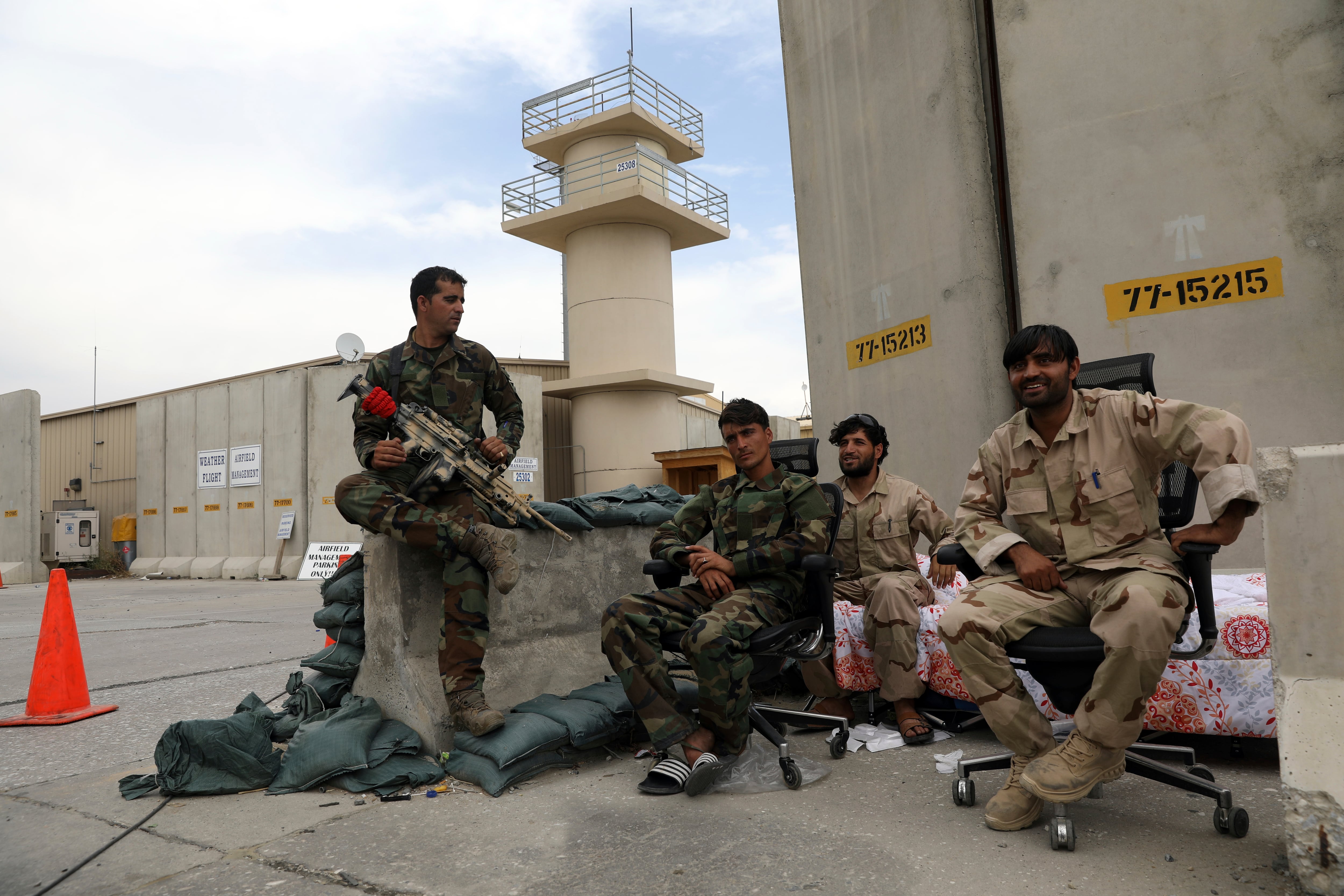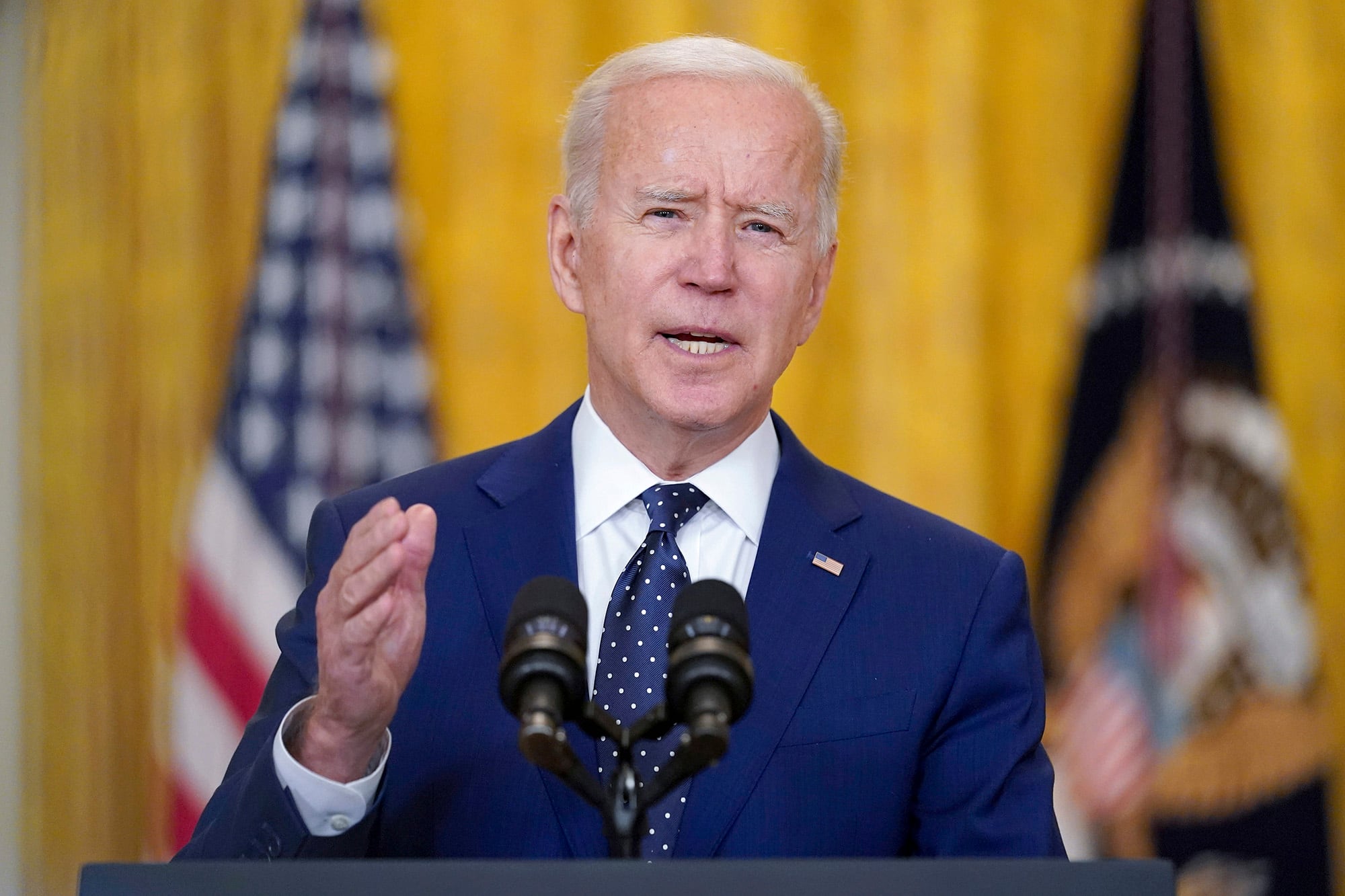President Joe Biden announced Thursday that the military mission in Afghanistan will end Aug. 31, saying the rapid exit protects U.S. troops from attacks by the Taliban.
Biden faces questions about whether the hasty military exodus by his country and its NATO allies leaves Afghanistan vulnerable to the Taliban, who have made advances in many northern districts. But Biden argued the war couldn’t be resolved my military means and that the Afghan people must decide their future.
“I will not send another generation of Americans to war in Afghanistan with no reasonable expectation of achieving a different outcome,” Biden said, answering questions from reporters at the White House. The session followed his first formal address since the near-complete pullout of U.S. troops from Afghanistan.
“No nation has ever unified Afghanistan. Empires have gone there and not done it,” Biden said.
While Biden said there was no “mission accomplished” moment, he argued the U.S. achieved its main goal of denying terrorists a haven in Afghanistan. Twenty years after the U.S. and other Western countries sent troops to Afghanistan, it was no longer worth the cost in lives and money.
Biden said the pace of the withdrawal was about protecting troops ― “Speed is safety” ― and that the drawdown’s been managed such that no U.S. or allied forces have been lost.
“Our military commanders advised me that once I made the decision and the war, we needed to move swiftly to conduct the main elements of the drawdown,” Biden said, adding: “Conducting our drawdown differently would have certainly come with increased risk of safety to our personnel, and to me, those risks were unacceptable.”
U.S. military and humanitarian assistance would continue, he said, but counter terror assets would be refocused on Africa and other areas in the Mideast that he said present greater threats. After the U.S. and its allies trained and equipped some 300,000 Afghan forces, it was their time to defend their nation, he said.
Biden said Kabul falling to the Taliban would not be an acceptable outcome. But he also pushed back against the notion that such a scenario was certain.
“Do I trust the Taliban? No,” Biden said. “But I trust the capacity of the Afghan military, who is better trained, better equipped and more competent in terms of conducting war.”
Afterward, Pentagon press secretary John Kirby told reporters that U.S. aid would continue and include an added three A-29 Super Tucano aircraft, nearly 40 refurbished UH-60 Black Hawk helicopters and overhauls of MI-17 helicopters, as well as logistics and maintenance assistance.
The U.S. is also working to expand its already “robust over-the-horizon capability” to support the Afghan government after the pullout, Kirby said, pointing to a carrier strike group in the region and additional military facilities throughout the Middle East. The goal is to build more options and emplace U.S. assets more closely.
However, neither Kirby nor the president provided details about which neighboring countries would agree to host American assets over the long-term, or the status of those talks.
“Make no mistake: Our military and intelligence leaders are confident they have the capabilities to protect the homeland and our interests from any terrorist threat emanating from Afghanistan,” Biden said, adding the over-the-horizon capability would “allow us to keep our eyes firmly fixed on any direct threats on the United States in the region and act quickly and decisively if needed.”

More than 2,400 U.S. troops have died and more than 20,000 have been wounded wounded in support of the war since 2001, according to the Defense Department. It’s estimated that over 3,800 U.S. private security contractors have been killed. The suffering has been even greater for Afghanistan with estimates showing more than 66,000 Afghan troops killed and more than 2.7 million forced to flee their homes — mostly to Iran.
Biden announced in April that the last 2,500 to 3,500 U.S. soldiers and 7,000 allied NATO soldiers would depart Afghanistan. Last month, the Pentagon said 650 troops would remain to protect the sprawling U.S. embassy in Kabul and to operate a counter-artillery system at the Kabul airport.
On Tuesday the U.S. military said 90 percent of American troops and equipment had already left the country, with the drawdown set to finish by late August. Last week, U.S. officials vacated the country’s biggest airfield, Bagram Air Base, the epicenter of the war to oust the Taliban and hunt down the al-Qaida perpetrators of the 9/11 terrorist attacks on America.
Kirby acknowledged the Taliban had taken dozens of district centers and it’s expected to threaten provincial centers as well. Kirby stressed, however, that the U.S. is not seeing the same level of threat it faced from Afghanistan before 9/11.
“That doesn’t mean that there aren’t still al Qaeda operatives or cells in Afghanistan, I’m not saying that there aren’t. But they are nothing like the organization they were on 9/11, 20 years ago,” Kirby said.
The president has faced criticism from some Republicans, but also a number of newspaper editorial boards, for pulling out of Afghanistan, even though President Donald Trump made the 2020 deal with the Taliban to withdraw all U.S. forces by May 2021.
A Washington Post editorial last week said Biden ought to have reconsidered the swift withdrawal, citing the crumbling Afghan government and its forces. It called him “cold to the country’s plight,” particularly as he said last month that Afghans would have to “decide their future.”
“That future is likely to be bleak, if current trends continue. As U.S. advisers and air support melt away, Afghan army units are being wiped out by the Taliban, or are surrendering without a fight,” the editorial reads.
Biden said the administration is working with Congress to make it easier for thousands of Afghans who worked for the American military or NATO, and their families, to relocate to the U.S. Biden said the U.S. would be conducting flights for Afghan allies this month before the U.S. military mission concludes, housing some in third-party countries temporarily.
Biden said the law doesn’t allow for the visa applicants to wait in the U.S. and that he was working with lawmakers for a change.
Biden said that since he took office, some 2,500 Afghans have been offered visas, though fewer than half have decided to leave Afghanistan so far.
Speaking afterward, Kirby said it’s unclear as yet which countries overseas would host the evacuees. The process, led by the State Department, is taking a global look at U.S. and partner facilities.
This story contains information from the Associated Press.
Joe Gould was the senior Pentagon reporter for Defense News, covering the intersection of national security policy, politics and the defense industry. He had previously served as Congress reporter.




